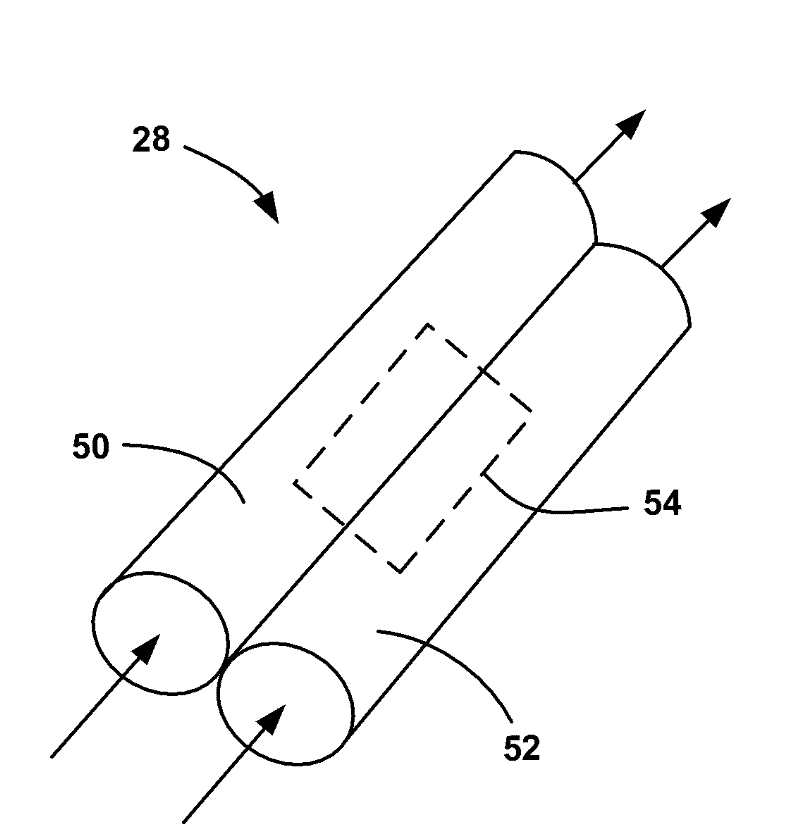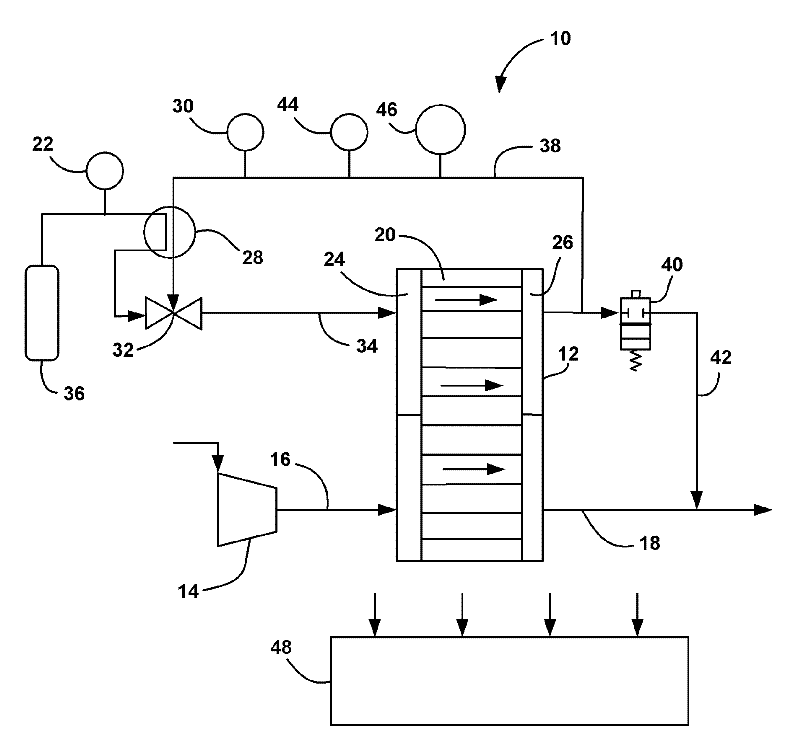Hydrogen concentration sensor utilizing cell voltage resulting from hydrogen partial pressure difference
A concentration sensor, hydrogen technology, applied in fuel cells, electrochemical generators, fuel cell additives, etc., can solve the problem of unavailable hydrogen concentration measurement
- Summary
- Abstract
- Description
- Claims
- Application Information
AI Technical Summary
Problems solved by technology
Method used
Image
Examples
Embodiment Construction
[0068] The following description of embodiments of the present invention relating to a hydrogen concentration sensor for a fuel cell system is merely illustrative in nature and in no way intended to limit the invention or its application or use.
[0069] figure 1 is a schematic plan view of a fuel cell system 10 including a fuel cell stack 12 having fuel cells 20 . Compressor 14 provides compressed air to the cathode side of fuel cell stack 12 via cathode input line 16 . The cathode exhaust gas is output from the fuel cell stack 12 through the cathode exhaust gas pipeline 18 . The injector 32 injects hydrogen from a hydrogen source 36 (eg, a high pressure tank) through the anode intake manifold 24 and into the anode side of the fuel cell stack 12 via the anode input line 34 . Fresh hydrogen gas from hydrogen source 36 is also routed through hydrogen concentration sensor assembly 28, described in detail below. The pressure sensor 22 measures the pressure of the fresh hydroge...
PUM
| Property | Measurement | Unit |
|---|---|---|
| thickness | aaaaa | aaaaa |
Abstract
Description
Claims
Application Information
 Login to View More
Login to View More - R&D
- Intellectual Property
- Life Sciences
- Materials
- Tech Scout
- Unparalleled Data Quality
- Higher Quality Content
- 60% Fewer Hallucinations
Browse by: Latest US Patents, China's latest patents, Technical Efficacy Thesaurus, Application Domain, Technology Topic, Popular Technical Reports.
© 2025 PatSnap. All rights reserved.Legal|Privacy policy|Modern Slavery Act Transparency Statement|Sitemap|About US| Contact US: help@patsnap.com



